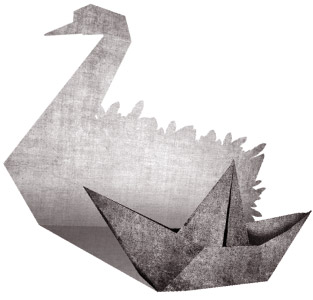What innovations in data collection will mean for global food
systems
In 2013, Europeans were surprised to learn they had unknowingly been
eating horse meat that had been sold to them as beef. While safe, eating
horse meat is considered taboo in many parts of Europe, and the news
became a scandal that revealed deep vulnerabilities in the food system.
 |
|
'She was once a thing of
beauty' |
The seafood industry suffers from similar problems. "Illegal,
unregulated or unreported sources account for 7-15% of globally traded
fish", says Alistair Douglas, Partner at SmartAqua, an aquaculture,
seafood and agribusiness advisory group. "And even then, legal fish
sources aren't necessarily sustainable."
The drive to improve food systems will come from two directions:
governments and consumers. "Governments will continue to focus on food
illness, animal welfare and fraud", says Brian Sterling, Managing
Director of the Global Food Traceability Center.
"But consumers are demanding better reporting of other metrics like
nutrition, taste and source."
Innovations in data collection and analysis are already giving
consumers an unprecedented view of where their food comes from.
A good example is the Fish Trax Marketplace, a platform
thataggregates fishery data and provides a public interface. "It allows
consumers to scan a QR code and see where their fish was caught, by
which captain and on which boat", says Douglas. "There are even videos."
A more transparent food system also allows suppliers to identify
efficiency improvements.
That means suppliers who take food traceability seriously could
doubly benefit, as they could significantly reduce their costs while
improving their brand image among increasingly discerning customers.
"Analytics could potentially help fishers optimise where, when and
how they catch fish, thus reducing their costs, fuel consumption and
carbon footprint while also providing a better service to customers",
says Douglas.
If suppliers are looking for inspiration, they don't have to go far..
Indices that measure and communicate the environmental credentials of
consumer products have cropped up in sectors as diverse as electronics,
textiles and tourism. Even the diamond trade - an industry traditionally
fraught with opaque supply chains - has found a way to let some light
through. Diamonds mined under the Canadian Diamond Code of Conduct are
etched with a recognisable logo - a polar bear - to prove that they have
been responsibly sourced.
So what does the future hold for traceability in food systems?
Sterling is optimistic.
"Traceability will move from something that individual organisations
do to a more collaborative effort that involves the whole system", he
says. "And better access to information will benefit everyone along the
chain."
- GreenFutures |

